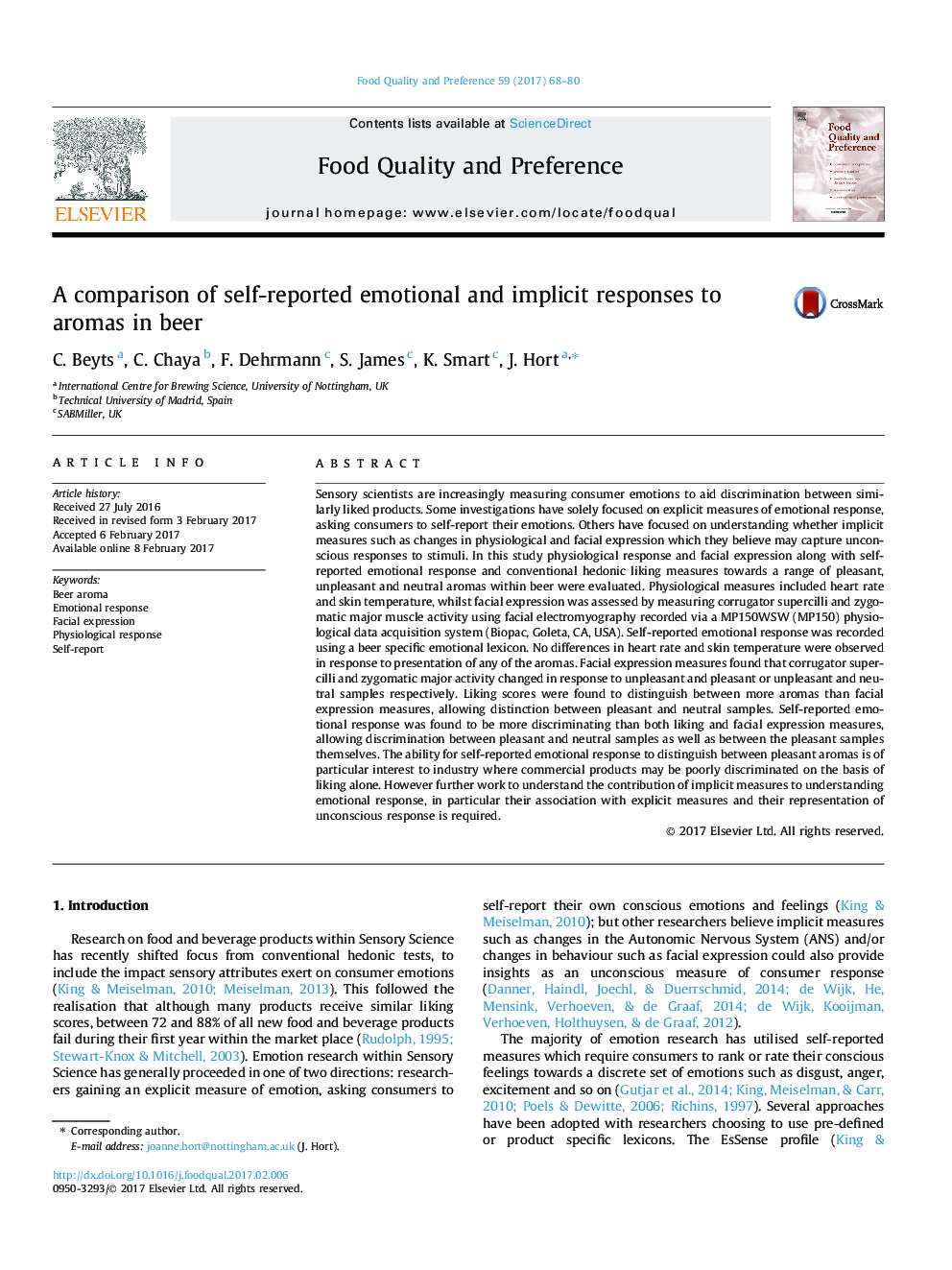| کد مقاله | کد نشریه | سال انتشار | مقاله انگلیسی | نسخه تمام متن |
|---|---|---|---|---|
| 5735960 | 1613141 | 2017 | 13 صفحه PDF | دانلود رایگان |
عنوان انگلیسی مقاله ISI
A comparison of self-reported emotional and implicit responses to aromas in beer
ترجمه فارسی عنوان
مقایسۀ پاسخ های عاطفی و ضمنی خود به خودی خود به عطر در آبجو
دانلود مقاله + سفارش ترجمه
دانلود مقاله ISI انگلیسی
رایگان برای ایرانیان
کلمات کلیدی
عطر آبجو، پاسخ احساسی، حالت چهره، پاسخ فیزیولوژیکی، خود گزارش،
موضوعات مرتبط
علوم زیستی و بیوفناوری
علوم کشاورزی و بیولوژیک
دانش تغذیه
چکیده انگلیسی
Sensory scientists are increasingly measuring consumer emotions to aid discrimination between similarly liked products. Some investigations have solely focused on explicit measures of emotional response, asking consumers to self-report their emotions. Others have focused on understanding whether implicit measures such as changes in physiological and facial expression which they believe may capture unconscious responses to stimuli. In this study physiological response and facial expression along with self-reported emotional response and conventional hedonic liking measures towards a range of pleasant, unpleasant and neutral aromas within beer were evaluated. Physiological measures included heart rate and skin temperature, whilst facial expression was assessed by measuring corrugator supercilli and zygomatic major muscle activity using facial electromyography recorded via a MP150WSW (MP150) physiological data acquisition system (Biopac, Goleta, CA, USA). Self-reported emotional response was recorded using a beer specific emotional lexicon. No differences in heart rate and skin temperature were observed in response to presentation of any of the aromas. Facial expression measures found that corrugator supercilli and zygomatic major activity changed in response to unpleasant and pleasant or unpleasant and neutral samples respectively. Liking scores were found to distinguish between more aromas than facial expression measures, allowing distinction between pleasant and neutral samples. Self-reported emotional response was found to be more discriminating than both liking and facial expression measures, allowing discrimination between pleasant and neutral samples as well as between the pleasant samples themselves. The ability for self-reported emotional response to distinguish between pleasant aromas is of particular interest to industry where commercial products may be poorly discriminated on the basis of liking alone. However further work to understand the contribution of implicit measures to understanding emotional response, in particular their association with explicit measures and their representation of unconscious response is required.
ناشر
Database: Elsevier - ScienceDirect (ساینس دایرکت)
Journal: Food Quality and Preference - Volume 59, July 2017, Pages 68-80
Journal: Food Quality and Preference - Volume 59, July 2017, Pages 68-80
نویسندگان
C. Beyts, C. Chaya, F. Dehrmann, S. James, K. Smart, J. Hort,
